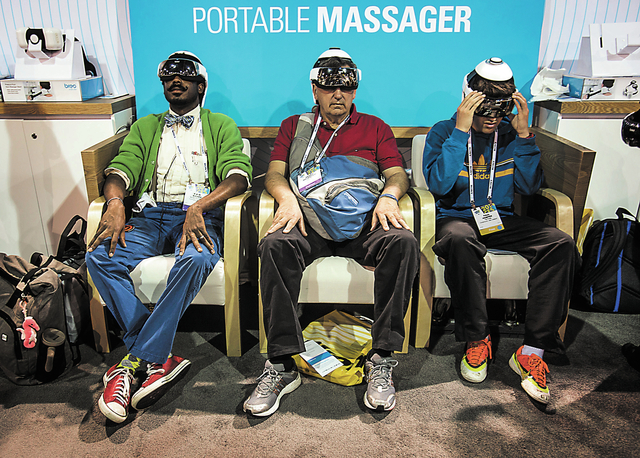Despite the buzz, status of wearable technologies still unclear
Wearables are one of the biggest tech buzzwords in 2014, but where does the technology stand?
That was the central question during “The Era of Wearable Tech Arrives,” a conference at International CES, running through Friday in Las Vegas.
Chris Massot, chief marketing officer of product-development firm Synapse, said nothing great has come of wearables thus far, but it’s certain to happen.
Massot, who has worked with companies such as Nike, Philips and Samsung, said in the future people will rely on four devices — a computer, notebook computer, phone and a wearable.
The question is what that wearable will be.
Mario Esposito, chief technology officer of Heapsylon LLC, says the problem with today’s fitness wearables is the information they share is often obvious.
After a run, he doesn’t want to be told how far he’s run — “Thank you, I was there,” Esposito said.
Instead, information about how the user can improve is what he would like to see.
Heapsylon LLC develops software and e-textiles sensors. It’s Sensoria Fitness Smart Sock capture information and send it to a smartphone application that acts as a fitness coach. The Fitness Bra and Fitness T-shirt pair wirelessly with heart monitors.
Stephen Pierce, medical devices leader for IBM, said incredible technology is already out there, it’s just a matter of improving it. In health care, Pierce said wearable sensors will collect body data, which can integrate with environmental and historical data, to produce diagnostic and preventive information.
He pointed to IBM’s Watson, which can help doctors diagnose patients by incorporating current symptoms with personal and family medical history, past doctor’s notes, and up-to-date research and clinical studies. In finance, Watson can analyze large amounts of data and identify trends to make investment suggestions and manage risk.
In the future, Pierce predicts we’ll have wearables, technologically advanced clothing and implantable and ingestible technologies to capture information about our bodies.
“Wearables will be the key source of information,” he said. “Computers will be the cloud.”
Sonny Vu, CEO and founder of Misfit Wearables, used diabetic patches as an example of the hurdles wearable technology faces.
The high-tech patches deliver insulin as effectively as needles by pushing it through the skin. Though the patches save diabetes sufferers from having to prick their fingers to check their levels, most shy away from it.
It isn’t more popular because it’s “incredibly invasive,” Vu said.
For Vu’s product, a quarter-sized wearable that tracks activity, he said battery life is a challenge. He wanted to achieve a six-month battery life, but could only guarantee a range of four to six months.
Others at the conference shared the battery-life lament.
“I think we’ve reached the end-physics right now for batteries,” FitLinxx President and CEO Dave Monahan said during a talk called “Wearable Tech: Function Meets Fashion.”
When asked about favorite technology, Vu cited Google Glass for its ability to help doctors diagnose patients and help Amazon logistics operators find products.
He also acknowledged smartwatches, but said they still have potential to improve.
“Someone is going to discover an amazing use case,” Vu said. “I don’t know what it is.”
Contact reporter Kristy Totten at ktotten@reviewjournal.com or 702-477-3809. Follow @kristy_tea on Twitter


















